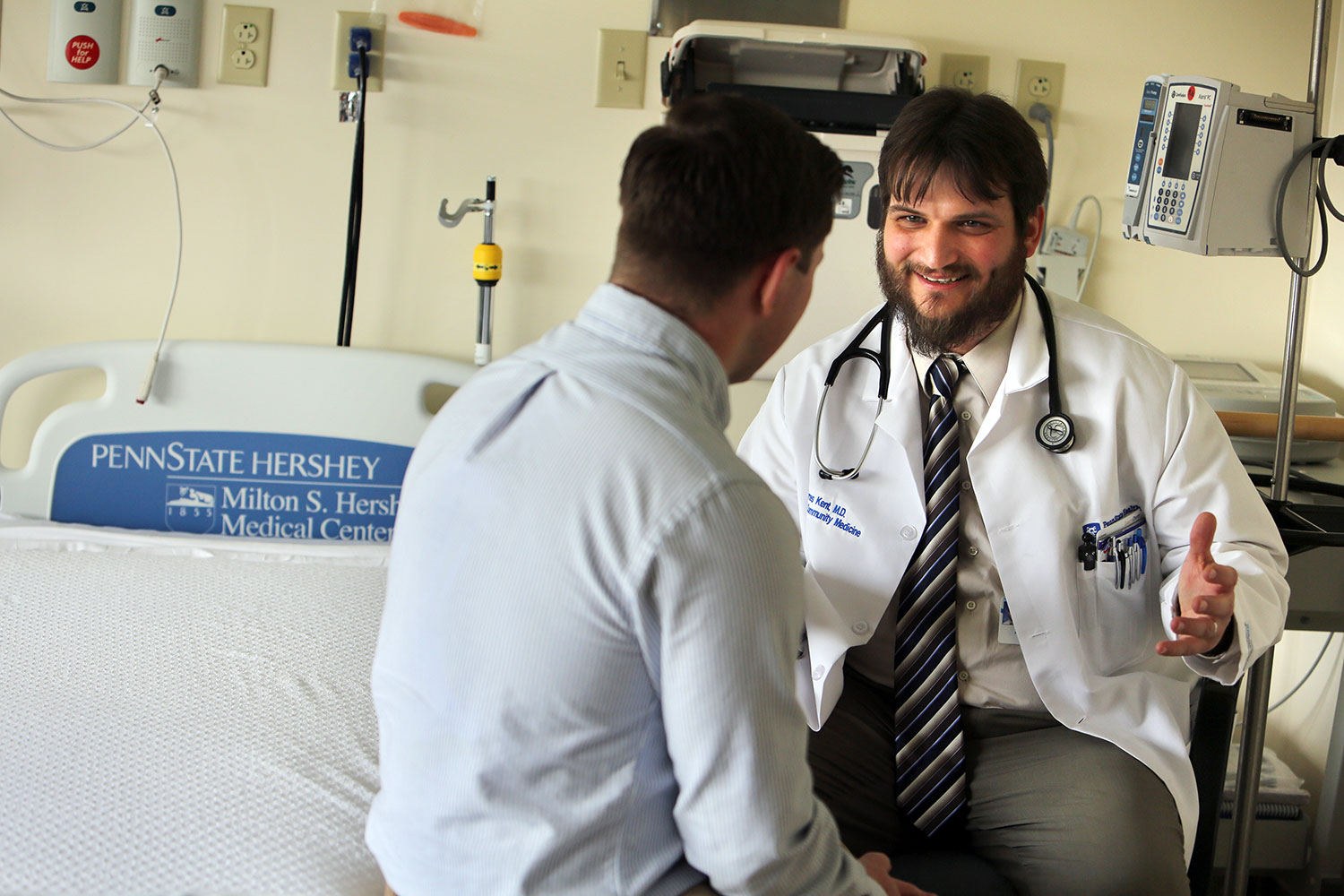College of Medicine accelerated program puts physicians on the fast track to family medicine

Across the nation, especially in rural areas, America is facing an acute shortage of doctors to practice family medicine. Most medical schools are in big cities, so many small communities lack resources to draw top candidates to their region. With older practitioners retiring and fewer candidates ready to take their place, Penn State College of Medicine launched an accelerated program to allow students to complete medical school in three years and enter family practice one year earlier.
In 2017, Dr. James Kent became the first graduate of the accelerated program, which allows students to complete medical school in just three years, followed by a three-year residency at Penn State Health Milton S. Hershey Medical Center.
Part of the College of Medicine's Family Medicine Accelerated Pathway, also known as a 3+3 pathway, the program allows graduates to save a year of tuition and living expenses, which could add up to $70,000. Kent was also selected for the Chambersburg Longitudinal Integrated Clerkship (LIC), which provides $20,000 in tuition reimbursement if he chooses to practice in one of Summit Health's underserved areas.
The longitudinal aspect of the program is key to Kent. “That's my ideal practice, having long-term relationships with family members of multiple generations. I just find that very special and meaningful.” In addition to serving patient families, Kent also finds a tightknit circle of professionals in his field. “Family medicine is communal among the providers. There's just a lot of camaraderie, support and mentoring.”
“James is the best,” sums up his friend and mentor Gingrich. “He's been making a positive impression with his dedication, empathy and ability on every rotation. That just reinforces my belief that the accelerated program and Longitudinal Integrated Clerkship is an excellent training ground for future family medicine colleagues.”
Read more about Kent’s experiences and the accelerated program in this Penn State Medicine article.
If you're having trouble accessing this content, or would like it in another format, please email Penn State Health Marketing & Communications.
